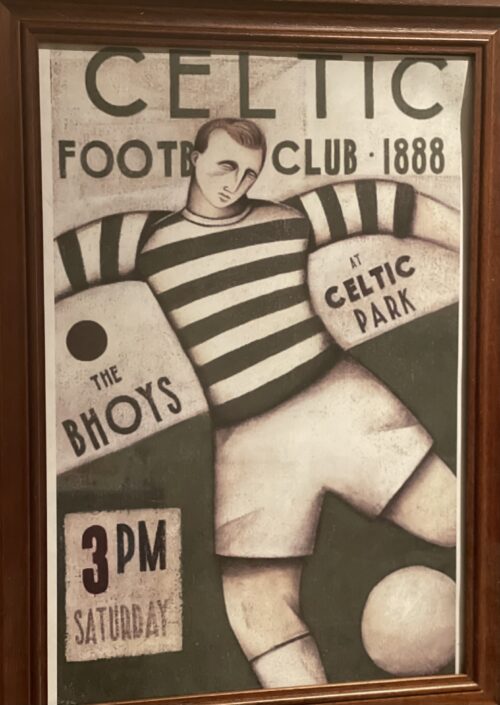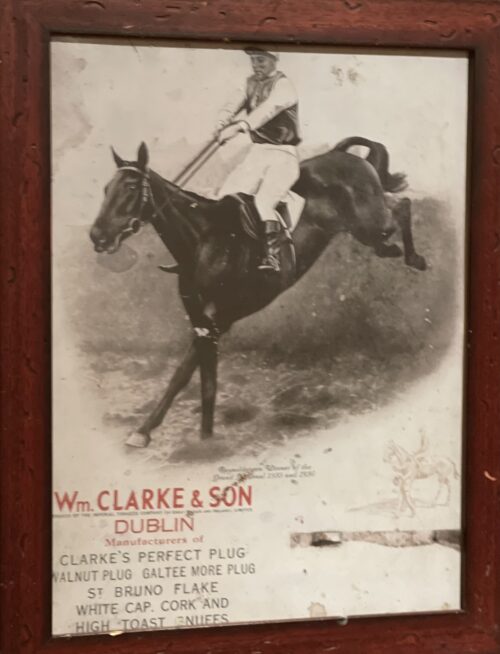“My father had an interest every now and again going to the matches. I remember them coming from Portmagee, Derrynane and Cahirciveen to play. That’s when I remember feeling that was something special about playing sport. “I remember going to a game on a boat with my father. The Islanders were playing, that was in 1945, and those memories from long ago come back to me every so often. And a lot of those players and a lot of the inter-county players are dead now. But I remember the first time I played in a Munster final in Killarney, in 1956, and only two of those players are still alive (Tom Long and Seán Ó Murchú).”
But for a job in which he worked at for most of his Kerry playing days, O’Connell said he would never have worn the green and gold. “Between 1956 and ‘66, I worked for the Western Union company on Valentia Island, five full days and a half day on Saturday. It was a very useful job; it facilitated me in a great way. Otherwise, it was a job that would be too demanding and it also meant I was free at the weekends. “Any person playing amateur sport without an appropriate job would find it very hard to find perfection in it. Otherwise, I would never have played for Kerry.”
O’Connell has questioned the Government’s grants scheme for inter-county Gaelic players. The Valentia Island man believes the funding mechanism, which will rise to €3 million per annum by 2018, has been signed off without the authority of the Irish tax-payers.Interviewed by Raidió na Gaeltachta on his 80th birthday yesterday, O’Connell criticised the Government for what he determines as directing remuneration towards county footballers and hurlers.
“I have no involvement in the games today, except for watching it, but something I don’t agree with... it’s okay for the GAA to generate money in Croke Park and to spend it on the players if they want to, but I don’t agree at all that Government money, money of the Government of Ireland collected through taxes from the ordinary person, is being paid to the players.
“I don’t think they have any permission to do that. That money should be spent on health and education rather than what’s being done now that I read in the paper, which is the way it is now.” In a wide-ranging interview with Helen Ní Shé on the An Saol ó Dheas programme, O’Connell also took a dim view of outgoing Kerry minor footballer Mark O’Connor’s switch to AFL club Geelong on a two-year rookie contract.
“I’m not too impressed with that game in Australia at all. If Gaelic football was played properly, without pulling and dragging out of each other, and things like that, it would be a much better game than the game in Australia.
“But again, in this country, the money isn’t in this country to give money to the players professionally at all and people have jobs now. If they had a good job and time to train, it’s a pastime. It’s a pastime. “Sport is a pastime. And people are saying there is pressure on them because they have to train... it’s a pastime for the trainer too, meeting and in contact with people the same age as them and things like that. That’s a great thing.”
O’Connell doesn’t buy the idea more Gaelic players want to be involved in a full-time sport“Ah, that’s the kind of talk the media presents before them, that there is pressure on them. Give it up if you’re not happy, that’s the way it should be. To be good at anything, you enjoy anything that you’re good at, and practice that, you understand.”
He marvels at what modern day players are provided with.
“They have the facilities now. The facilities weren’t there long ago. But they have a lot of facilities now. Look at Fitzgerald Stadium in Killarney, there wasn’t a stand, there wasn’t a dressing room or anything when I started playing. As far as I remember, I don’t know what you called it, the mental hospital, we had a room in that place where we togged out. Every place throughout Kerry and throughout Ireland, the facilities are at a very high standard now in comparison to years ago.”
Speaking to Jerry O’Sullivan on Radio Kerry’s Kerry Today programme, O’Connell bemoaned where Gaelic football was going and the negativity attached to it.“The (current) game doesn’t appeal to me. For me anyway it was always ball first, man second. To try and negate the other player it wasn’t my style.” O’Connell insisted he wasn’t criticising current players but the game itself and how it was taken too much from other codes.
Although the mark has been championed as a means of safeguarding the high-fielding O’Connell was renowned for, he sees it as another example of a foreign rule. Even in my own time, there was no clear-cut set of rules stated in print for a referee.
“I always thought as a player that a referee’s job should be almost to mark the scores and players playing the game should know what the game was and play accordingly.
O’Connell continued: “Gaelic football has been played for about 120 years or whatever so and there is no bit of original wisdom within it to have your own game and to be powerful of your own game and not to be borrowing from other (sports), mark or no mark, red card, yellow card. It’s borrowing from other codes and that’s the negativity. It’s been always there, especially so now.”
In an at times awkward conversation on Newstalk’s Off The Ball last night, O’Connell played down the significance of his sporting accomplishments. “Winning the game was not triumph and losing the game was not disaster. It was winning and losing games and that was all part of sport.” He remarked he had no passion in life. “Passion in life? None. None whatsoever. Playing football afforded me the chance to do exercise and play games locally and sometimes in Dublin. It was a nice way of associating with other people and so on.
“It wasn’t a passion as such. Some people might think because living on an island (that it was) but it just happened that I occurred to be very good at it and got my place on the county team and got some games in Dublin.” He admitted his reluctance with the adulation he has received over the years. “That’s only comment. There’s no such thing as one player being better than the next because football is about a style of play. Some people have different styles and if one style satisfies some people other people might like the do-or-die effort.
“Beloved? I don’t know what that means. If your style of play satisfies, all well and good but maybe I wasn’t ruthless enough. I wouldn’t do anything to win. The end to me wasn’t as important as the means. The means in which I played was a justification and if it won all well and good. “When I see people talking about Kerry beaten and a disastrous result, there is no such thing in the game of sport. Win or lose, you take your win or your beating in your stride, that’s it. “Another thing, coming from Valentia Island, I was kind of unique. Being an islander, it was unusual and that was why a lot of attention was put on me. It was difficult because you had difficult, bad weather sometimes here and you could never really practice to your extent.
“That was often attributed to me, being in a kind of an unique and odd situation, that there must be something strange about a person to play from an island. It wasn’t. It was the game, the code of the area, and I played from an early age. “It wasn’t the be-all and end-all because in my household there was no discussion on football.” ‘Any day if I caught a few good balls and kicked a few good balls, that was success’
Mick O’Connell says the simple satisfaction of having “caught a few good balls and kicked a few good balls” is what remains with him most from his playing time with Kerry.
Looking back, he doesn’t like to use the word “career” and when asked if the battles with the famed Galway of the 1960s were what come back to him most he replied: “I enjoyed all games whether it was here in Cahirsiveen, Tralee, Fitzgerald Stadium or New Ross, Tuam or any other place I was. “Any day if I caught a few good balls and kicked a few good balls that was success.
“I played in 10 All-Irelands and lost a bigger percentage than I won (four victories). So be it, I had involvement. Success is a bit sweeter when you taste a bit of defeat as well. “That was my view. Looking back on it, it gave me a great association with people from different parts of Kerry and different parts of Ireland and abroad as well. Sport was a great dimension to my life but not everything.” O’Connell also returned to 1959 when he captained Kerry to an All-Ireland crown and left the Sam Maguire Cup in the dressing room. “I got the cup from Dr (Joseph) Stuart who was the president of the GAA at the time and my knee was injured the same day. I left the cup in the dressing room and I came home on the train and people asked me the reason I didn’t take the Sam Maguire with me. It was the team’s cup, I was no bigger than any other member of the team. The people who were in charge should have taken it home. It came home to the island a few weeks or so afterwards.”He doesn’t know the location of his four Celtic Crosses. “It doesn’t matter. I don’t know. I gave one of them to somebody. There was a raffle or something on years ago.”
“The purpose of the game was to deliver it (the ball) as distinct from now when carrying the ball, running with it and passing with it. That’s the big change. I don’t blame the players at present. It’s very confusing. Even in my time, the elders never clearly stated a rule about obstruction or anything like that. It’s very hard in Ireland to get a discussion on the game.”



































